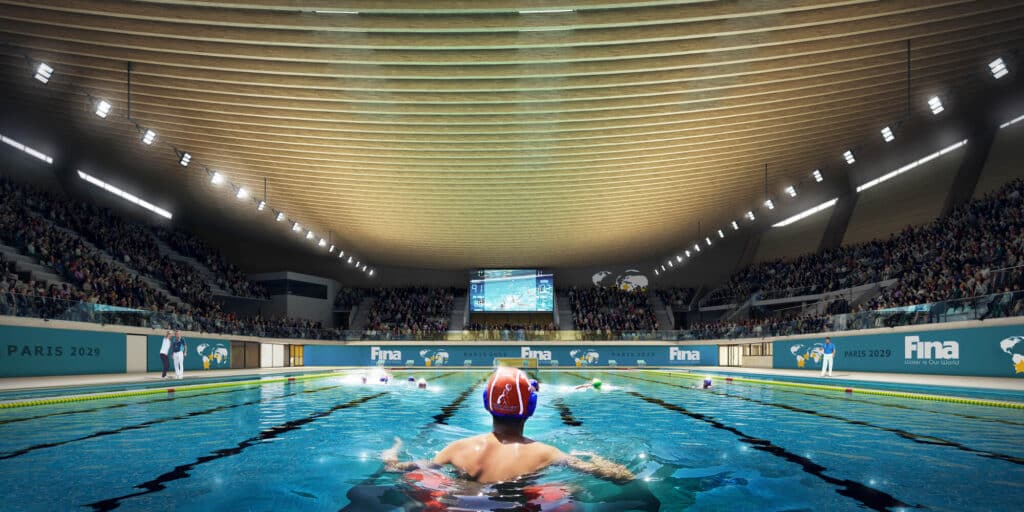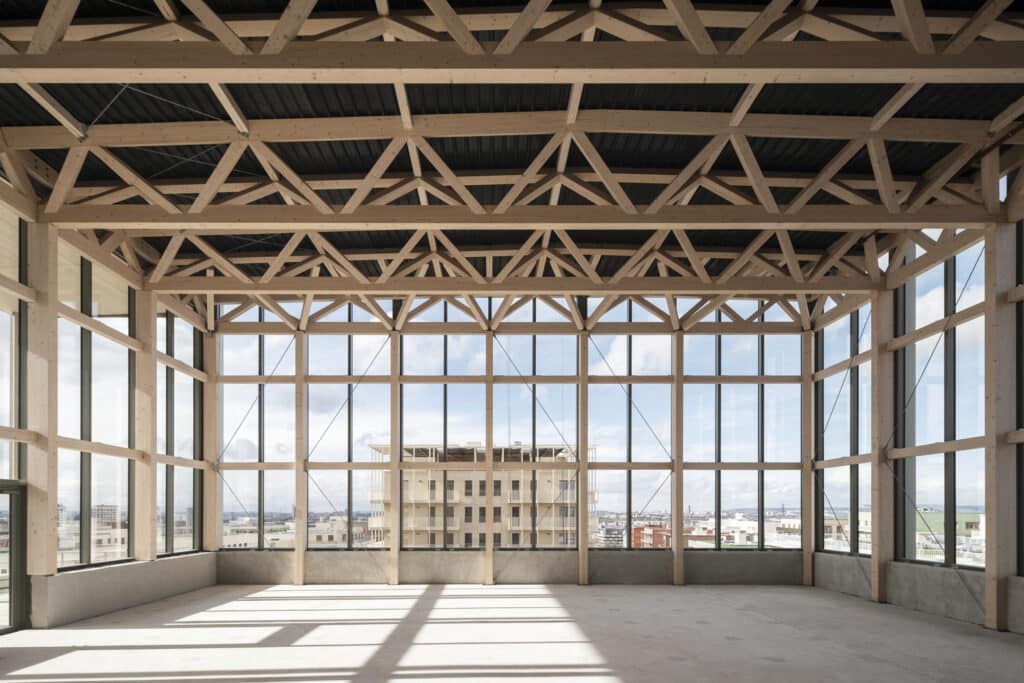As Paris prepares to host the Olympic and Paralympic Games, the event’s sustainability is coming under scrutiny.
The organisers have promoted Paris 2024 as the greenest Olympics ever, aiming to halve the carbon emissions of previous Olympics. They have drastically cut back on building new stadiums and venues, and have relied heavily on wood as a building material for new infrastructure and used low-carbon concrete. This approach has another benefit: it’s cheaper.
But hosting the world’s biggest sporting event, with thousands of athletes and millions of spectators, will still come at an environmental cost.
This has led to calls for a radical rethink of the Olympic Games, including for it to be scaled back. But in the longer term, Paris 2024’s sustainability efforts may create a lasting legacy for the city – and for future games.
The Greenest Games?
The vision for Paris 2024 is simple: “do more with less, do better and leave a useful legacy”. These Games will be the first to align with the sustainability-focused New Norm plan outlined by the International Olympic Committee.
Hosting the Olympics is a huge undertaking. Previous Olympics have seen host cities spend billions on new stadiums and competition venues. But once the competition is over, many of these expensive buildings are unused or abandoned.
It’s also carbon intensive. Paris organisers intend to halve the emissions of London 2012 and Rio 2016, but even so, these games will add an estimated two million tonnes of carbon dioxide to the atmosphere – the same as the annual emissions of a small country like Malta or the Bahamas. Paris won’t have the lowest emissions of recent Olympics – the COVID-affected, spectator-free Tokyo 2020 Games takes that title.
How are these games greener?
To make the Paris Games greener than they have been, organisers have come at the challenge from many directions.
First, authorities are using what they already have. Fully 95% of all Olympic infrastructure was already there. Temporary stadiums have been built near famous landmarks to make use of the spectacular setting. But only one permanent venue has been built – the aquatics centre, built largely from carbon-storing timber, covered in solar panels and with an advanced water recycling system. After the games, it will become a community venue.

Athletes will certainly notice the focus on sustainability. The athletes’ village – which will be repurposed afterwards as social housing – has no built-in air conditioning. Instead, it was meant to rely on natural breezes and a geo-thermal cooling system. This move proved controversial, and many teams – including Australia’s – began planning to bring portable aircon to ensure athletes can sleep well during the summer nights. Organisers have changed course, and have moved to install 2,500 portable units.
Athletes and spectators will notice a change in their food. Over 60% of meal options will be vegetarian, helping to lower the carbon footprint.

The Olympic venues will be powered exclusively by renewable energy, a big change from previous games, which used noisy generators to ensure there were no power outages.
As part of a “circular economy” approach, 90% of the products used for Paris 2024 come from recycled materials or will be re-used later. The medals, for example, are of fully recycled metal, including an original piece of iron from the Eiffel Tower.
Mattresses from the athletes’ village will be re-used by the French army. In the background, apps and checklists are being used to map and assess the carbon footprint of every aspect of games delivery.

So why are there still lingering concerns? Critics have pointed out these laudable efforts can only go so far.
About 50% of the emissions from the Paris Games will come from the travel and accommodation of athletes, officials and millions of spectators. These emissions – especially from air travel – are very hard to reduce. Organisers will use carbon offsets in a number of countries to compensate for these emissions. As our recent assessment of Brisbane’s 2032 Games shows, relying on offsets is not the most sustainable option compared with reducing emissions in the first place.
Are the Olympics compatible with a greener future?
Allegations of “greenwashing” have been levelled at some of the over-hyped credentials of the Paris Games. And more generally, critics have argued the Olympics in their current form are not compatible with a greener future. Some want the Olympics to adopt a decentralised model sharing hosting over multiple countries.
The World Cup will use this model in 2030, but still faces mounting criticism of the transport emissions necessary as teams and spectators traverse three continents.
Others have argued the games should be rotated on a roster of just three or four cities, which already have the appropriate infrastructure. For its part, the International Olympic Committee has emphasized the power of the games to bring the world together in fractious times.
There are other benefits to the current system. Cities that host the Olympics Games have a rare opportunity to think bigger. In Paris, authorities have invested a whopping A$2.2 billion in infrastructure to clean up its long-polluted river, allowing it to be used for open-water swimming and triathlon in the Olympics and providing a cleaner river for Parisians to enjoy. As Olympic authorities focus on sustainability, host cities can use the Paris example and go further to become global role models.
We may well need novel forms of carbon accounting to quantify the legacy of hosting the Olympics. The new idea of Scope 4 emissions allows researchers to account for emissions avoided in the future due to Olympic initiatives. For example, the 415km of cycleways connecting Paris’s Olympic venues will be used by the public long after these games end.
The Paris Games may well be remembered not only for photo finishes and new records but for the sustainability efforts of the organisers. While these games aren’t emissions-free, they substantially improve over their predecessors. Let’s hope the organisers of future games, including Brisbane, pick up the baton.
- This article is republished from The Conversation under a Creative Commons license. Read the original article. For more information about the Paris Olympics and how organisers are ditching steel for timber, visit Wood Central’s special feature.






